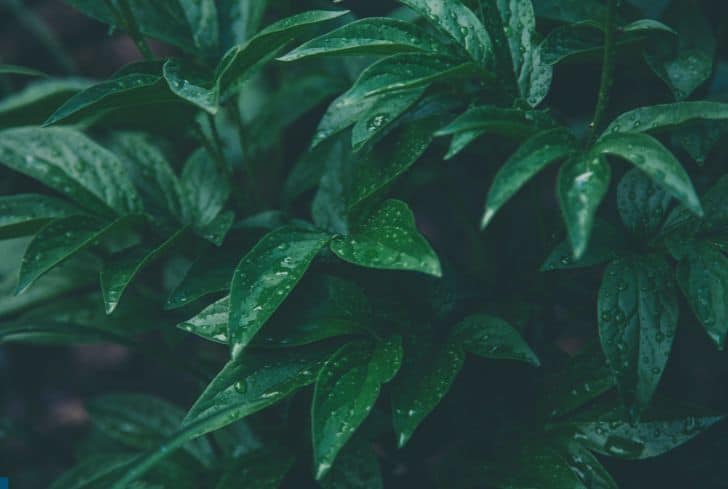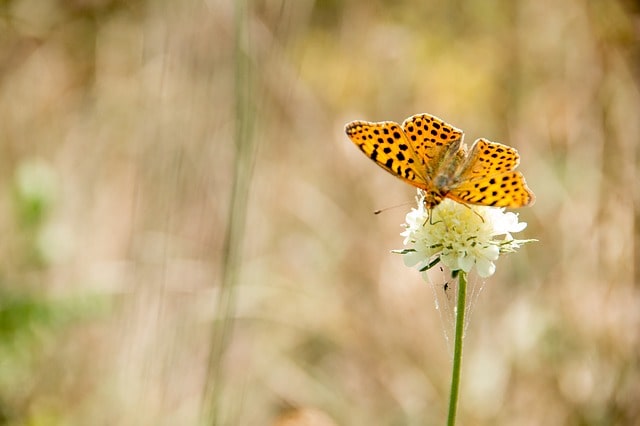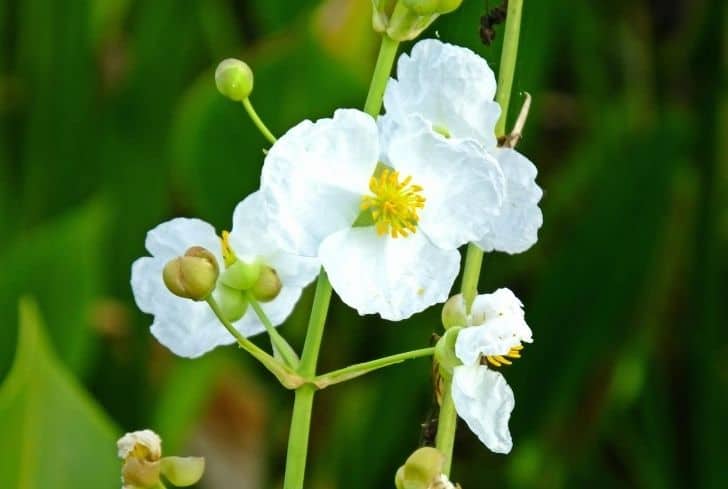Is Incense Smoke Bad For Plants? (Yes, it is)

If you’re a plant owner, there are various things to consider. For instance, you may not be able to use synthetic air fresheners around plants as they contain harmful chemicals.
Now, you might think of incense sticks as the next alternative. Is incense sticks bad for plants? Can incense smoke cause any damage to the plant’s growth?
In this article, let’s discuss more about the effect of incense smoke on plants, and whether it’s safe or not.
Can Incense Smoke Harm Plants?
Despite its healing advantages to the mind, incense smoke is very harmful to plants. For healthy growth, plants need a healthy dose of air and other nutrients. Smoke interferes with the surroundings and releases toxins with synthetic chemicals into the air that can be absorbed into the plant’s cellular structure.
The aroma created by incense sticks is, after all, made with essential oils and flavors that may harm the plant’s health. If you care a lot about your plants, then using organic incense is the best viable option – it is also an ecological contribution to the earth.
Too much incense smoke can have negative effects on plants – the smoke and essential oils from the stick can be absorbed directly into the plant. If within close reach, the parts of the plant most exposed to the smoke can cause it to yellow. Eventually, the leaves will wilt away and your plant will also start to wither.
Should You Burn Incense Near Plants?
Although burning incense sticks is good for the mind, it can be toxic to nearby plants. The smoke has a lot of artificial substances mixed in its formula to give it the pleasing smell it has. These toxins can get inside the leaves of the plant and stop the whole process of photosynthesis and damage their cellular structure.
Even if you were to get natural incense sticks, like Frankincense, smoke is not a good condition for the growth of a plant. It blocks out the natural surrounding air making it difficult for the plant to breathe, alongside the chemicals it releases into the air.
Too much incense smoke, in fact, is even harmful to the human body. When air pollutants from incense are inhaled into the body, our system can have allergic and irritating reactions in respiratory system. Studies have shown that inhaling too much incense smoke can also cause problems like dermatitis.
Can Smoke From a Bushfire Be Dangerous To Plants?
Any kind of smoke is dangerous to plants – especially those from bushfires. Forest fires are one of the biggest factors of air pollution today and are the reasons behind the existence of a large number of greenhouse gases like carbon dioxide, carbon monoxide, and particulate matter in the atmosphere.
Research has shown that exposing a plant to only 30 minutes of time in the smoke can majorly damage the stomata of the leaves and interfere with the functioning of the plant. It is also dangerous because there are half-combusted carbon compounds that give smoke the dark color it has.
Bush fires are strong and the toxins released into the air go directly to form a layer of soot on top of the leaves and block the path of photosynthesis – causing them to yellow immediately and wilt off.
Bushfires, although sometimes accidental, can cause great problems to the environment. Air pollution can also weaken the atmosphere and break it, causing more heat to the planet and eventually aiding global warming.
Hence, remember that if you have a pile of leaves and twigs, do not burn them off in the background. You are better off burying them into the soil, especially if you have plants, as they serve as natural compost.
Is Smoking Cigarettes Dangerous To Plants?
Cigarettes are just as harmful to plants as they are to humans. If you put a plant for a prolonged time in a room that often has cigarette smoke, the leaves will eventually get coated with tar and toxins that will block the process of photosynthesis which is essential for growth.
Cigarette smoke is full of harmful substances like hydrogen cyanide, nicotine, carbon monoxide, formaldehyde, etc that can cause serious damage to the air surrounding plants. Imagine – if an item can cause damage enough to cause cancer, deadly disease to humans, then plants that have weaker biology do not stand a chance.
Many studies and research have shown that when exposed to cigarette smoke, plants eventually turn yellow, dry, and shrivel up, before finally dying. Smoking also contributes to air pollution greatly and directly influences the growth of global warming.
Hence, if you are a smoker, it is best to either quit for your plants or at least keep them away from the area you smoke in.

Does Incense Ash Help To Grow Plants?
Incense ash can help your plants grow if they are made of all-natural, organic ingredients. The ash from these sticks is very safe to use and can help plants grow, especially if you have gone for plant-based ones like lavender or eucalyptus.
Remember to scatter only some of the ash over the plant soil or mix it in with the compost for it to work well. Try to avoid animal-based ones and burn the sticks far away from your plants. Ash can provide nutrients like calcium, potassium, and other minerals to the soil which can then help them act as fertilizers.
Apart from that, it can also act as an insect repellent as bugs hate the smell and smoke of incense ash, so it might help create a safe environment for the plant to grow in. The best ash for plants, however, is wood ash, as it serves as the most organic source of minerals and nutrients.
How Do Plants React To Incense Ash?
Not all incense sticks are made naturally and have organic ingredients. The fragrances added in the formula of incense are sometimes full of toxic and artificial components like synthetic dyes ground into paste form that can cause harm and possibly even kill your plant – so ash is not always the best for plants.
If these harmful components mix into the soil, then they will get absorbed into the plant through its roots. Even essential oils that are labeled “100% natural” do not always respond well with the soil – especially the ones particularly made for driving insects away.
You do not need to buy special ones just for the purpose of it as all kinds of incense smoke repels bugs. If you really want an easy and natural fertilizer for plants, then going for wood ash is a better option as it is a trustable and reliable source. Hence, if you are a fan of both calming aromas and plants, you might want to make this switch.
What Can Incense Ash Be Used For?
It is amusing how incense sticks are a beneficial calming aid, but even when burnt to ashes, they can be of use in a number of ways, whether for esoteric or practical purposes. The following are a few ways in which you can use these leftovers for other useful things around the house.
1. Can Be Made Into an Insect Repellent
Burning incense is a great way to keep annoying insects at bay. Bugs do not really like the ashy, flowery smoke and the same can be achieved by the ashes. Simply take the incense ash and mix it well enough to create a paste.
For this solution to work out, simply spread this paste around the bottoms of doorways and window frames. These will keep mosquitoes and other nightly bugs away.
2. Used as a Fertilizer For Plants
While incense smoke is harmful to plants, its ash actually has a high potency of nutrients like potassium and other beneficial minerals that can work s a fertilizer. To use it for this purpose, you can simply spread the ash around the soil of your plant or mix it in with the compost.
However, remember to not go overboard and add too much as putting in a lot of ash can actually be harmful to your plant. Take this rule of hand – for every square yard of the area around your plant, add about two ounces of ash.
It is also much better if you mix the ash with compost rather than scatter it, for it will be easier for the plant to absorb the nutrients. It will also act as a more balanced fertilizer.
3. Can Be Turned Into An Air Refresher
Even in ash form, incense can be used and turned into an air freshener just by mixing in some essential oils and a bit of water. Simply mix these three ingredients in a spray bottle and use them as an aromatic solution to stubborn cooking smells in the kitchen or the musty atmosphere sometimes created by dampness.
Final Thoughts
Incense ashes have many uses – so it’s no wonder that this stick can create a pleasant atmosphere as well as be of use in its every form. Too much incense can be harmful to the environment and the planet, so it is recommended that you not put it to use excessively.
We hope that this article has helped make you understand the biology of a plant and why incense smoke can be bad for them.






